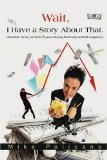I happened to be looking at The Ridgewood Country Club 100-year anniversary book, by William Quirin, issued in 1990. There is a brief section on The Depression. Given the current depressing times, I paused to read it over.
The current site of the Ridgewood CC was opened for play on May 30,1929, just five months before the onset of The Depression. Ridgewood was faced with some daunting problems at the start of its new A. W. Tillinghast golf course and its new clubhouse which was designed by

Clifford Wendehack, a premier clubhouse architect of the 20's.
(picture courtesy of ValSkinnerFoundation.org)Paraphrasing from the book, the 1930 balance sheet was not a pretty thing to look at nor were the problems presented easy to solve. The situation at the time was wholesale membership resignations, the decline of the price at which memberships could be sold, a large debt burden for the new facilities and an absolutely new property begging for its grow-in period.
The lion's share of the credit was given to Bob Strong who was the club President from 1931-1940. (Bob's brother was Rex Stout, author of the "Nero Wolfe" mystery novel series.) Bob, as the
Leader, ran the club at a profit each year. He would undertake one new capital project each year that would enhance the club's facilities. So efficiently was the club run that the dues were actually reduced from $200 to $180 in 1936 (they are slightly higher now).
Bob himself wrote in the 50-year club history book issued in 1940, that the credit belonged to the Board of Directors for running a very tight ship, to the management for sticking to a very tight budget and to a small group of enthusiastic members who spent countless hours bringing in new members so that the membership rolls did not decline.
Bob was a true leader. During the most difficult of times, he persevered to bring the club through to the other side. Then after accomplishing his objectives, he humbly took no praise and graciously gave it to others. He is an example for all of us.
So, what new examples of leadership will emerge from these depressing times?
Cheers, Mike






















